This report explores the changing attitudes towards hybrid work across a wide variety of businesses in three key categories:
Contents


The impact of hybrid work on employees and employers.
Download our research to get the full picture.
Introduction
America’s changing work landscape.
The world didn’t just survive an enforced period of flexible working during the pandemic—it thrived on it. As a result, employees are exploring new hybrid working models where they call the shots on where and when they work.
This is challenging employers to come to grips with what this means for their roles and responsibilities in this new landscape: from delivering on employee expectations, through supporting their well-being, to putting in place the technology needed to make hybrid working a success.
This report explores the changing attitudes toward hybrid work across a wide variety of businesses in three key categories:
Changing desires
Employee well-being
A tech-enabled future
01
Changing desires.
Changing desires.
With less than half of employees working in the same way that they did two years ago, it’s no surprise that attitudes toward work have changed, and toward hybrid work in particular. And however employees are working now, the ability to work flexibly is finding favor. Nearly half of those currently working on-site full-time want some element of hybrid working, while 85% of those who already have that flexibility want to retain it.
“The office is going to become a treat.”
C-Suite
Financial Services industry,
4,000-10,000 employees
Desire for hybrid working in future
Amongst total within each working category
(1-4 days in the office)
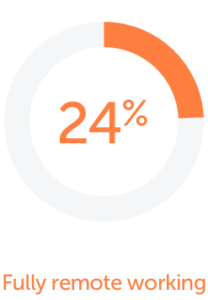
24% of people who are already fully remote working want to switch to a hybrid working model.
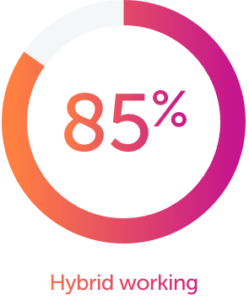
85% of people who are now hybrid working want to continue with this model in future.
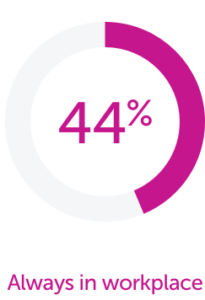
44% of people who are currently always in-office wish to move to a hybrid working model.

However, there is a gap between the demand for hybrid working and the prevalence of employers providing it. Across all industries and the public sector, the supply of hybrid working opportunities is 15-21 percentage points lower than the proportion of employees who want it.
Desire for hybrid working in future
Amongst total within each working category

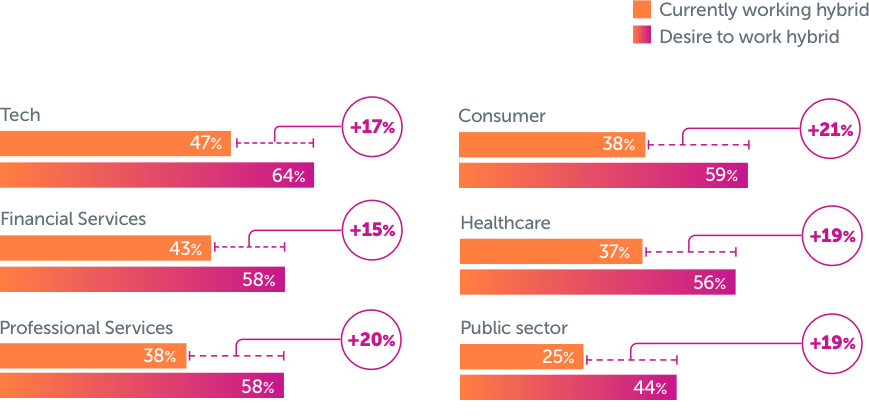
02
Employee well-being.
Employee well-being.
A major reason that hybrid working is proving popular in the long-term is because of the benefits it provides employees in when it comes to work/life balance. Reduction in time spent commuting and better management of home life were identified by our research as the two most commonly cited benefits of hybrid working.
7 in 10
Employees agree that hybrid working shows their company cares about employee emotional and mental well-being.
At the same time, the option of hybrid work has a positive impact on how much employees feel that their mental and emotional well-being is valued by their employers. While 69% of employees agree that hybrid working shows that employers are taking well-being into consideration, this figure rises to 76% among those who are hybrid working already.
Effect of hybrid working on employee attitudes
Agreement
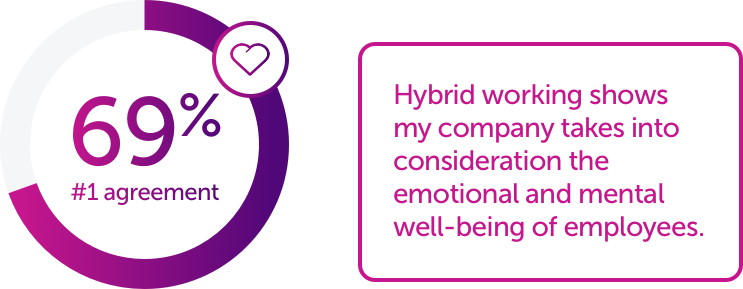
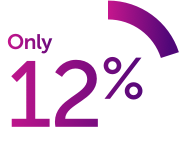
of respondents believe that the new hybrid model has persuaded their company leaders to invest in greater technology to satisfy these new working behaviours.
03
A tech-enabled future.
A tech-enabled future.
As hybrid working has become more commonplace – and as technology has helped it become smoother and more efficient – so the attitudes of management toward more flexible working models have changed. No longer are they suspicious or distrusting of employees who work from home: around 80% of managers now trust employees to work digitally and have found that their productivity is just as good when working remotely. As a result, a similar proportion have now realized that with productivity unaffected, hybrid working gives them the opportunity to streamline their business and find more efficiencies.
managers now “trust their employees to get their work done when working from home”.
Views on hybrid working
Managerial agreement
80%
#1 Agreement
I trust my employees/colleagues to get their work done when working from home/digitally.
78%
#2 Agreement
The pandemic has made me realize that the way we conduct business can be streamlined.
Summary
Employees want hybrid working now more than ever. And so employers must respond to these needs and prioritize mental health, flexible work options, and improved technology to support a better work-life balance and create happier employees.
Condeco can give you the workspace tools you’ll need to make it happen — so you can create better future outcomes for your business. Download the full report to learn more.

Download the full research report
Learn more about how evolving attitudes toward hybrid work can influence the future of your business.
Download our
report with full and detailed findings today.


